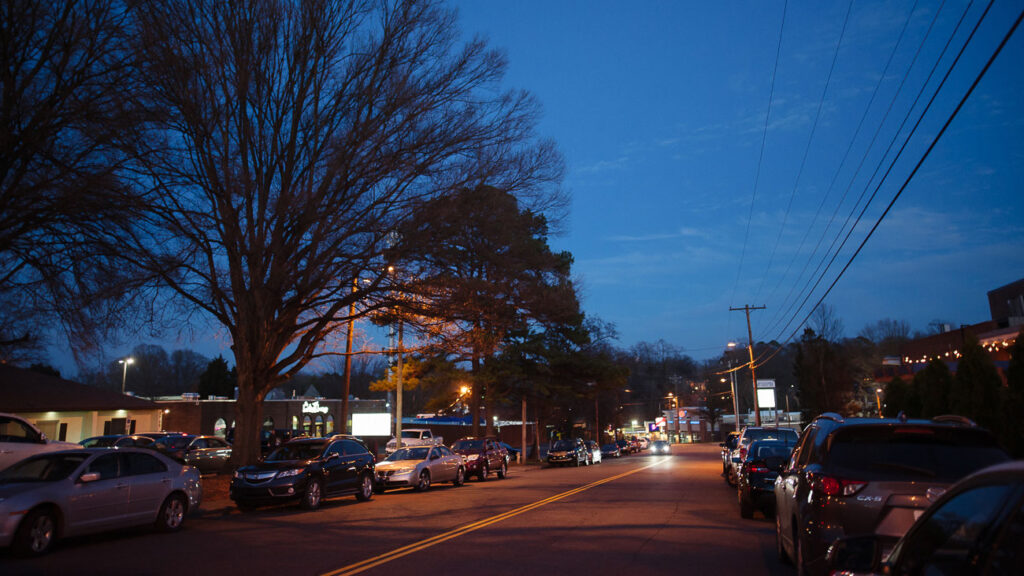5 ways to make Charlotte safer for pedestrians
A few weeks ago, we shared the bad news that pedestrians who are older adults, people of color, and people walking in lower-income areas are at higher risk of being killed in collisions. At least 6,227 pedestrians were killed in traffic last year in the US. A report by the Governors Highway Safety Association cited alcohol use, unsafe infrastructure, increased use of smartphones, and increased ownership of SUVs (which strike higher on the body and are more likely to cause serious injury) as factors for the increase.
But there’s good news, too! Today we’re taking a closer look at State of Place’s list of ways to make streets safer for pedestrians and considering how they could be implemented in Charlotte.
1. More parks + public spaces
Greenways and other off-road paths allow people to walk or bike without having to mix with cars. But even the presence of a well-designed park can dramatically reduce the chances of a collision. When people are out walking, bicycling and playing, drivers tend to slow down and pay more attention. As the report explains, these public spaces don’t necessarily need to be official parks to be beneficial to pedestrians. What’s most important is that they support vibrant outdoor life and attract people to spend time in them.
2. Pedestrian & bike amenities
This idea is pretty much common sense, right? People walking and riding bicycles need a safe place to travel. That means high-quality buffered sidewalks, signalized crosswalks (both midblock and at intersections), protected bike lanes, pedestrian refuge islands, and other infrastructure. The great news is that last year Charlotte City Council approved a doubling of the pedestrian program budget, from $15 to $30 Million over 2 years. But there’s still much more need for bike and pedestrian infrastructure than there is funding to build it.
3. Traffic Safety
Sustain Charlotte serves on the Charlotte Department of Transportation’s (CDOT) Vision Zero Task Force. Together with other community partners, we’re working towards a goal of eliminating traffic fatalities and serious injuries by 2030. CDOT is focusing efforts to improve safety within the High Injury Network, which is the approximately 10% of city streets that have a disproportionately high rate of traffic fatalities and serious injuries.
TAKE ACTION: Add your voice by sharing a comment on CDOT’s interactive Vision Zero map to let them know the specific areas where you see safety problems!
4. Proximity
Where there’s a variety of walkable destinations near neighborhoods and workplaces, people walk more! Communities with more non-residential locations — think coffee shops, corner stores, community centers and the like — have lower rates of collisions.

Charlotte’s Montford area has many destinations near a residential area, but lacks adequate pedestrian infrastructure (image: Charlotte Agenda). CDOT has been studying how to make the area safer to access.
Higher-density housing is needed to support local businesses. It’s just math: the more people live in a neighborhood within walking distances of these types of businesses, the more foot traffic the businesses are likely to experience. If Charlotte wants to support communities where people can live, work, and play, then we also need new zoning categories that allow for a combination of these uses! Which leads us to the fifth idea…
5. Density & Form
Pedestrians are generally safer in a denser built environment than one that is spread out. But how do we reconcile this with the reality that much of Charlotte is sprawling and built for cars rather than people? If we dedicate less space to parking, it will become possible to build denser development that’s also more walkable and safer for pedestrians. Decreasing setbacks, or the distance between building fronts and the street (or sidewalk), would also help to improve the form of the built environment. When buildings are closer to the street, drivers have a visual reminder that people are more likely to be walking nearby.
It’s actually a great time to be asking questions about form and density. Right now, public meetings are being held to define the values and vision for the Charlotte Future 2040 Comprehensive Plan. This is a plan that will guide how our city grows and how we invest in our city over the next 20 years.
Take action: Your voice is needed to shape Charlotte’s future, so check out the upcoming meetings on March 20, 26 and 27 and plan to attend one!
Thanks for reading!
As a nonprofit, community support is essential for us to keep doing what we do — including providing free articles like this. If you found this article helpful, please consider supporting Sustain Charlotte.
Want to stay in the loop? Subscribe to our weekly newsletter and follow us on Instagram, Facebook, and Twitter.
